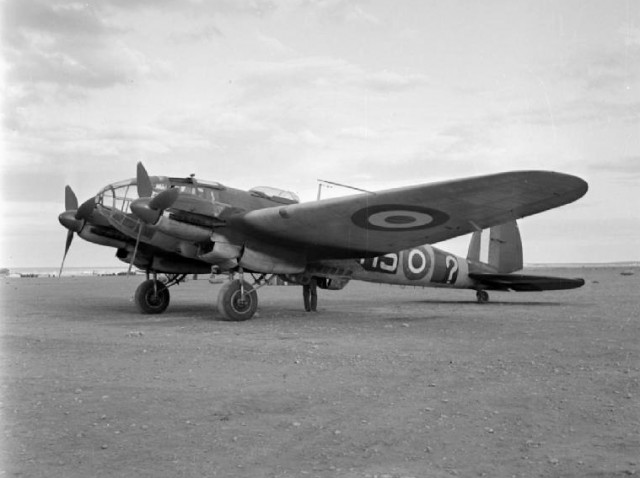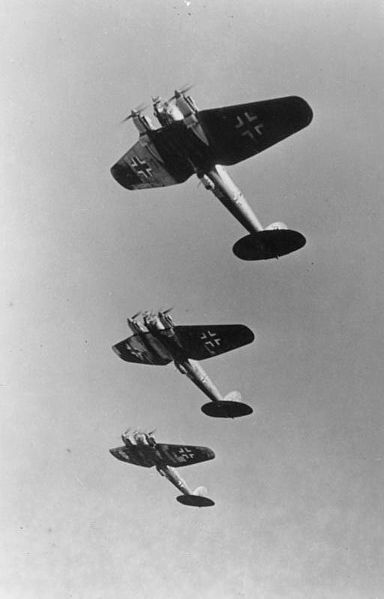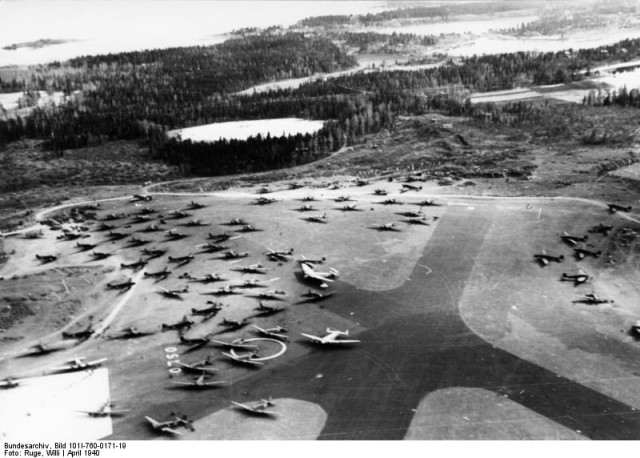The “Wolf in Sheep’s Clothing” – Heinkel HE 111 Bomber In Pictures
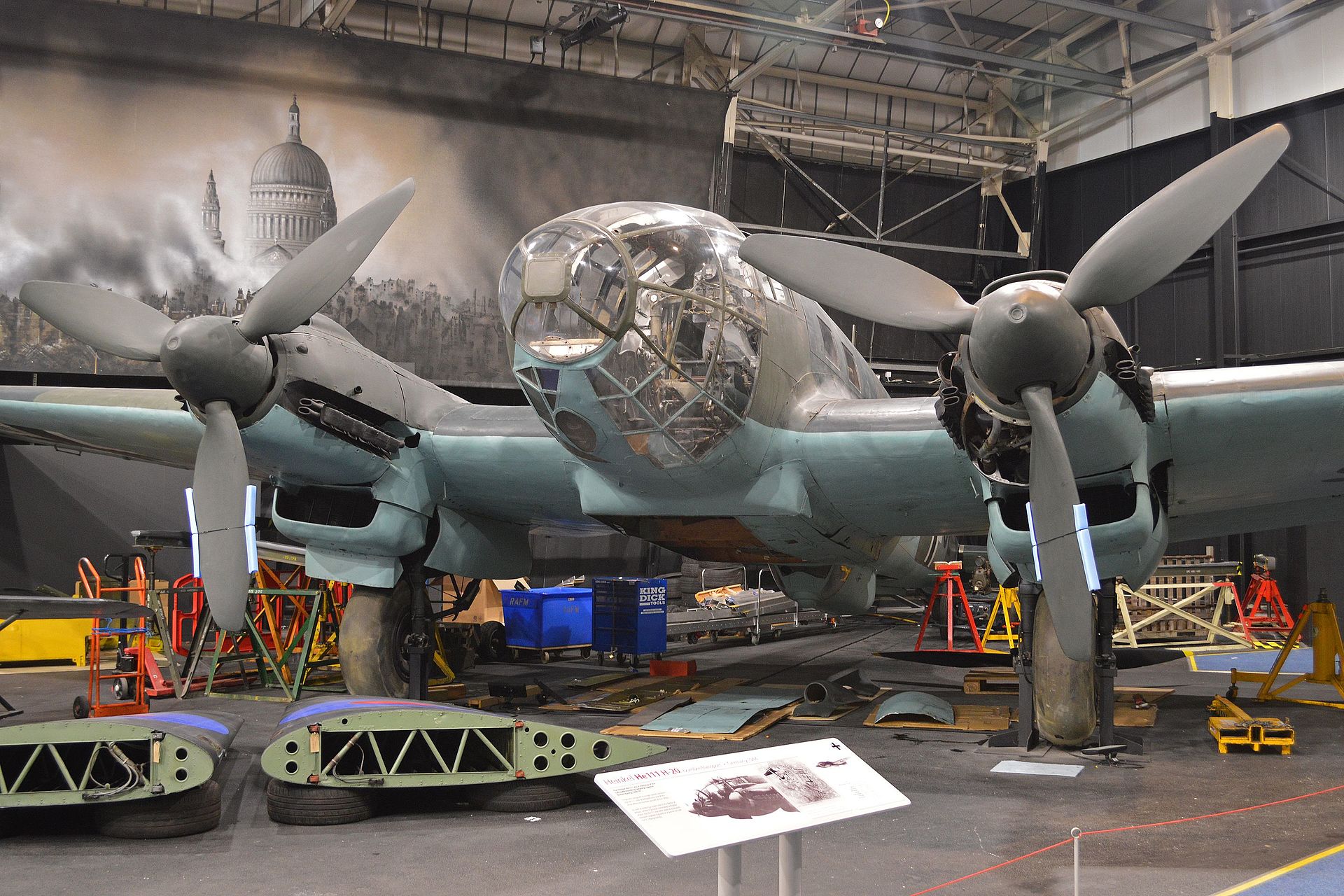
One of the most distinctive aircraft of WWII was the Heinkel He 111 bomber. Its distinctive shape, prominence in footage from the period, and participation in the Blitz meant it has since become a symbol of Germany’s war machine at the time.
It was a bomber from the beginning but was designed in the early 1930s at Heinkel Flugzeugwerke under the guise of a cargo plane. This ‘wolf in sheep’s clothing’ development was because the 1919 Treaty of Versailles forbid Germany from having an air force and producing military aircraft, including bombers. The He 111 first flew in 1935, and was to be a fast medium bomber in the future Luftwaffe.
The famous glazed “greenhouse” nose on the He 111 has made it one of the best-recognized German aircraft of the war, but earlier models have a more conventional nose.
A crew of 5 operated the aircraft; a pilot, a navigator who also served as the bombardier and nose gunner, a ventral gunner, dorsal gunner/radio operator, and a side gunner. The He 111 was powered by two Junkers Jumo 211 inverted V12s, producing 1,300 horsepower each, giving it a maximum speed of 270 mph, very fast for a 1930s bomber. It could carry either 2,000 kgs of bombs in its internal bomb bay, or 3,600 kgs externally, plus 7 MG 15 machine guns for defense against enemy aircraft.
When fully loaded with external ordnance, the weight and drag significantly impacted the aircraft’s performance, sometimes requiring a rocket-assisted takeoff.
The He 111 performed well, and could sustain large amounts of damage and still returning home.
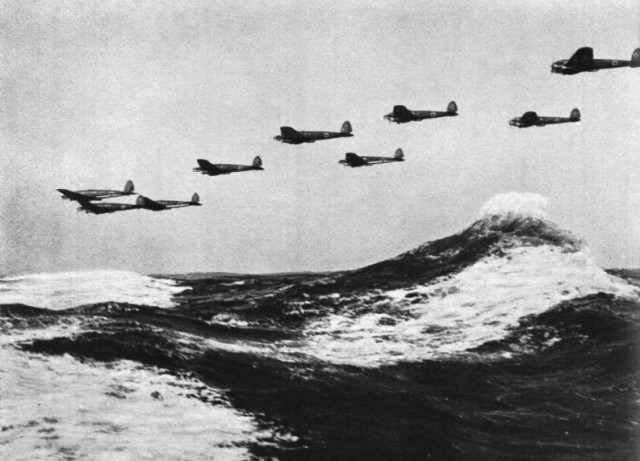
However when it went up against more modern aircraft like the Spitfire in the Battle of Britain, the He 111’s drawbacks of poor defensive armament, low speed and sluggish manoeuvrability were highlighted.
As the He 111 was one of Germany’s most common bombers, it served in a wide range of roles in many different locations throughout Europe. In the Battle of Britain it was used for strategic bombing, while in the Battle of the Atlantic it was used as a torpedo bomber. It also functioned as a transport plane.
By the time WWII started, the He 111 was four years old, so it required many upgrades over the course of the war to keep it relevant against the rapid pace of technological development during WWII. Despite this, by the wars end it was a decade old and obsolete, and production ceased in 1944.
The Bomber B project attempted to produce a newer multirole bomber that would replace the many niche aircraft Germany had at the time. The programme never provided a successful aircraft, but its priority meant few other designs ever reached production. This forced older and outdated aircraft to continue flying far longer than originally planned, including the He 111, which carried on until the wars end.
The He 111 design was licensed to the Spanish early in WWII, who only managed to produce a flying model in 1945, the CASA 2.111. It differed slightly from the He 111, mainly in powerplants, using British Merlin engines when supplies of German engines ran dry. The Heinkel’s descendant continued in service until 1973.



